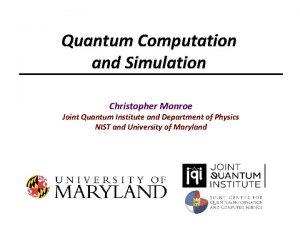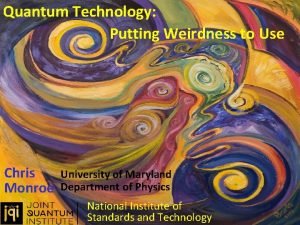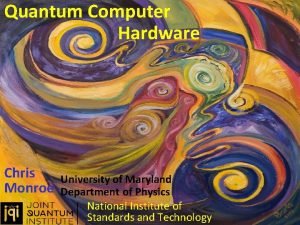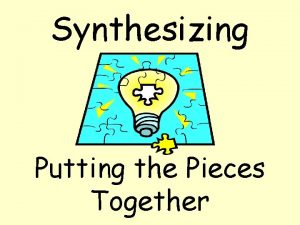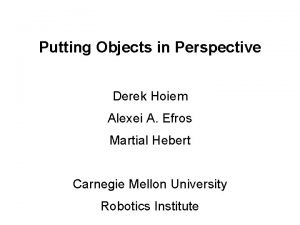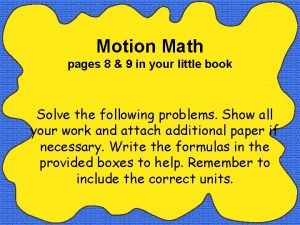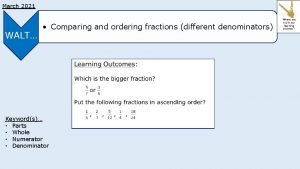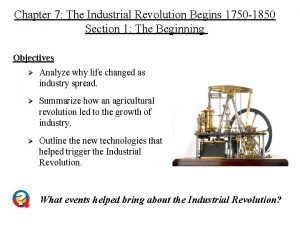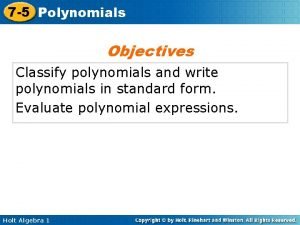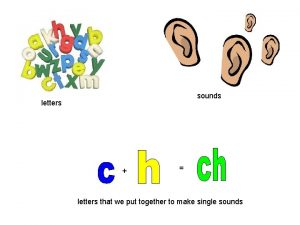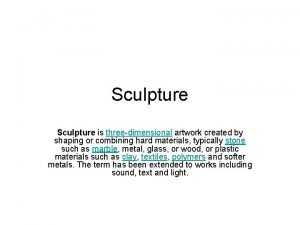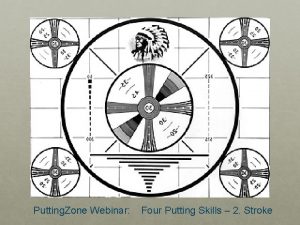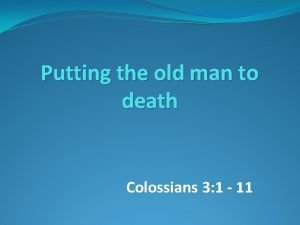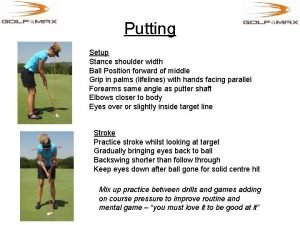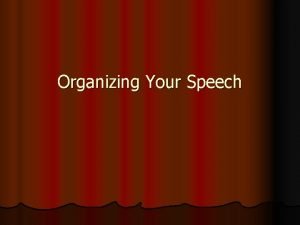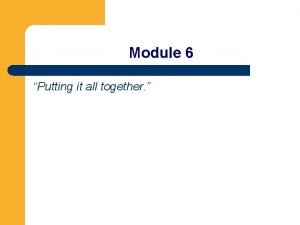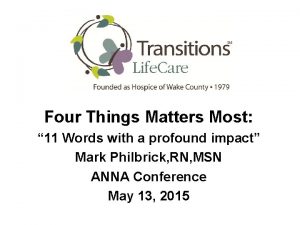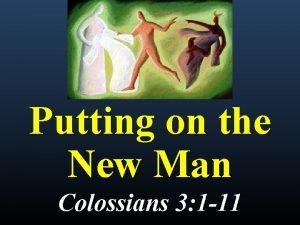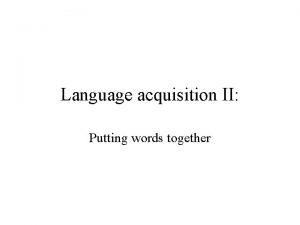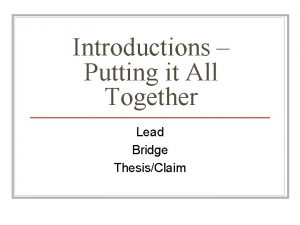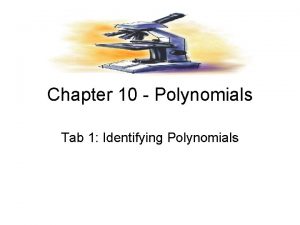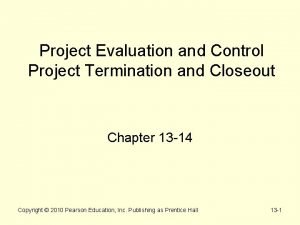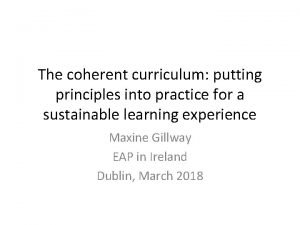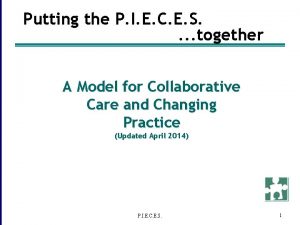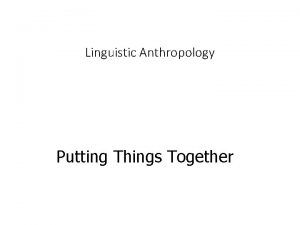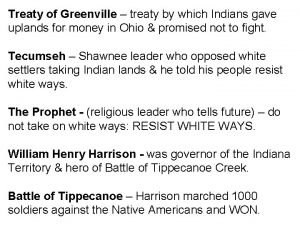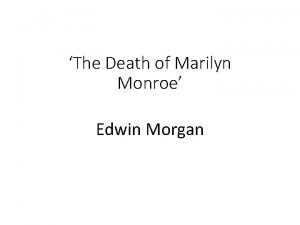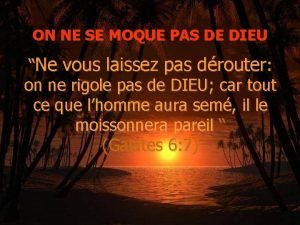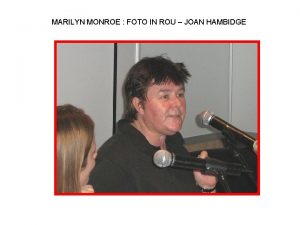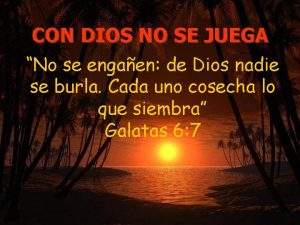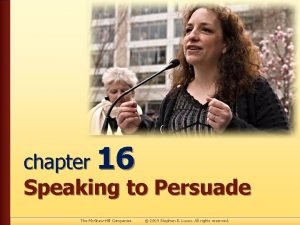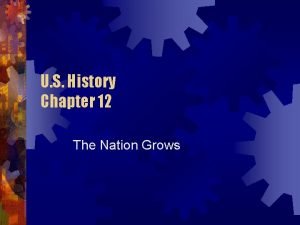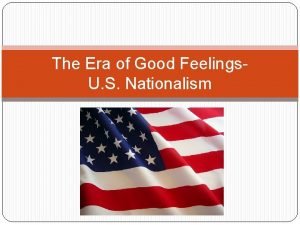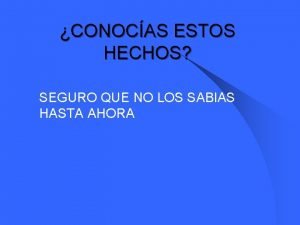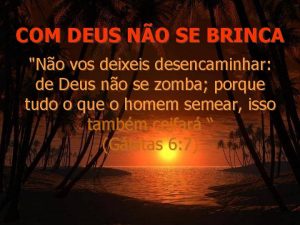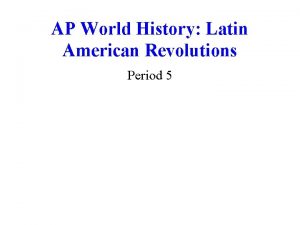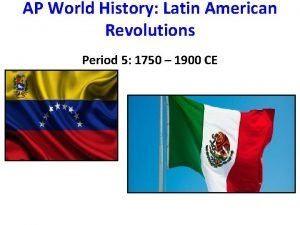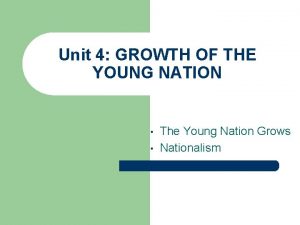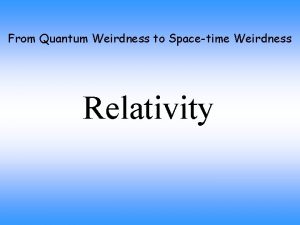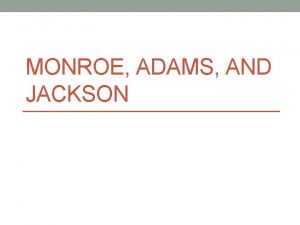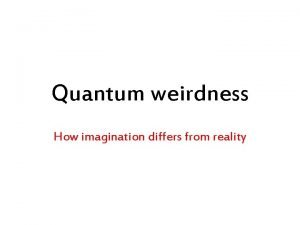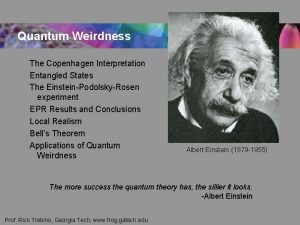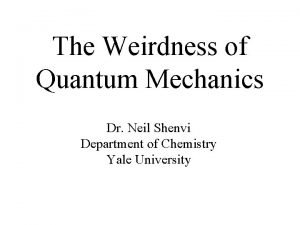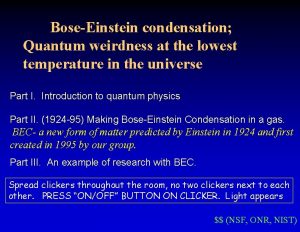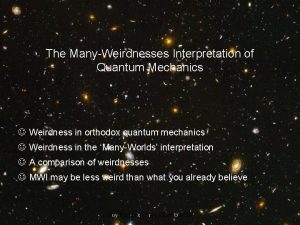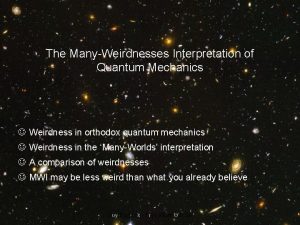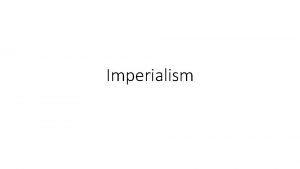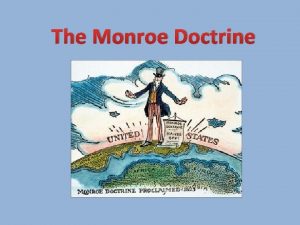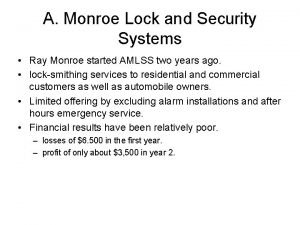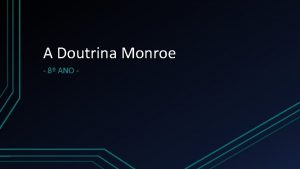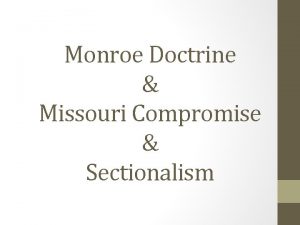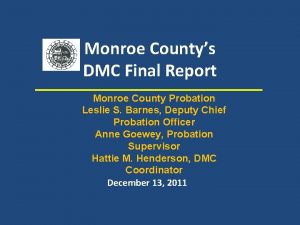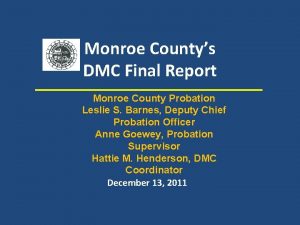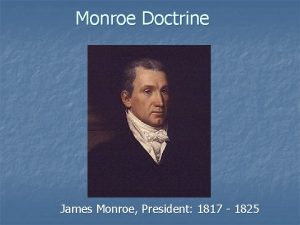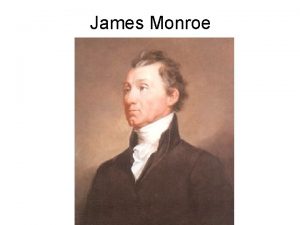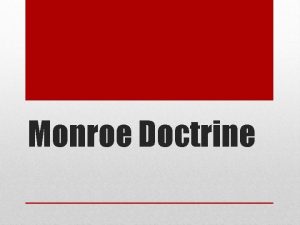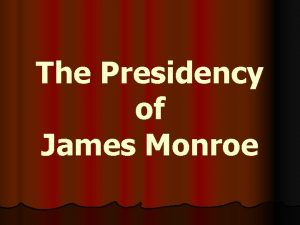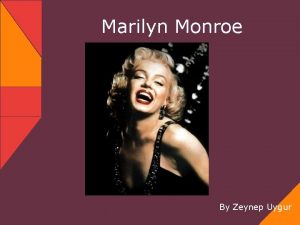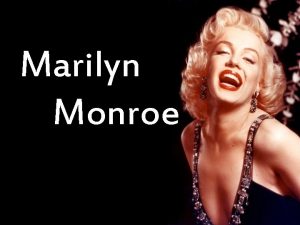Quantum Technology Putting Weirdness to Use Chris Monroe












![Quantum State: [0][0] & [1][1] John Bell (1964) Any possible “completion” to quantum mechanics Quantum State: [0][0] & [1][1] John Bell (1964) Any possible “completion” to quantum mechanics](https://slidetodoc.com/presentation_image_h/b94d6e045121b9b46eb8a4d869dcae62/image-13.jpg)
![Entanglement: Quantum Coins Two coins in a quantum superposition 1 [H][H] & [T][T] 1 Entanglement: Quantum Coins Two coins in a quantum superposition 1 [H][H] & [T][T] 1](https://slidetodoc.com/presentation_image_h/b94d6e045121b9b46eb8a4d869dcae62/image-14.jpg)
![Entanglement: Quantum Coins Two coins in a quantum superposition 1 0 [H][H] & [T][T] Entanglement: Quantum Coins Two coins in a quantum superposition 1 0 [H][H] & [T][T]](https://slidetodoc.com/presentation_image_h/b94d6e045121b9b46eb8a4d869dcae62/image-15.jpg)
![Entanglement: Quantum Coins Two coins in a quantum superposition 1 0 0 [H][H] & Entanglement: Quantum Coins Two coins in a quantum superposition 1 0 0 [H][H] &](https://slidetodoc.com/presentation_image_h/b94d6e045121b9b46eb8a4d869dcae62/image-16.jpg)
![Entanglement: Quantum Coins Two coins in a quantum superposition 1 0 0 1 [H][H] Entanglement: Quantum Coins Two coins in a quantum superposition 1 0 0 1 [H][H]](https://slidetodoc.com/presentation_image_h/b94d6e045121b9b46eb8a4d869dcae62/image-17.jpg)













































- Slides: 62

Quantum Technology: Putting Weirdness to Use Chris Monroe University of Maryland Department of Physics National Institute of Standards and Technology

Quantum mechanics and computing atom-sized transistors molecular-sized transistors 2025 2040

“There's Plenty of Room at the Bottom” (1959) Richard Feynman “When we get to the very, very small world – say circuits of seven atoms - we have a lot of new things that would happen that represent completely new opportunities for design. Atoms on a small scale behave like nothing on a large scale, for they satisfy the laws of quantum mechanics…”

A new science for the 21 st Century? Quantum Mechanics 20 th Century Information Theory 21 st Century Quantum Information Science

Computer Science and Information Theory Charles Babbage (1791 -1871) mechanical difference engine Alan Turing (1912 -1954) universal computing machines Claude Shannon (1916 -2001) quantify information: the bit

ENIAC (1946)

The first solid-state transistor (Bardeen, Brattain & Shockley, 1947)

Quantum Mechanics: A 20 th century revolution in physics • • Why doesn’t the electron collapse onto the nucleus of an atom? Why are thermodynamic anomalies in materials at low temperature? Why is light emitted at discrete colors? . . Erwin Schrödinger (1887 -1961) Albert Einstein (1879 -1955) Werner Heisenberg (1901 -1976)

The Golden Rules of Quantum Mechanics Rule #1: Quantum objects are waves and can be in states of superposition. “qubit”: |0 and |1 Rule #2: Rule #1 holds as long as you don’t look! |0 and |1 |0 probability p or |1 1 -p

GOOD NEWS… quantum parallel processing on 2 N inputs Example: N=3 qubits = a 0 |000 + a 1|001 + a 2 |010 + a 3 |011 a 4 |100 + a 5|101 + a 6 |110 + a 7 |111 f(x) N=300 qubits: more information than particles in the universe! …BAD NEWS… Measurement gives random result e. g. , |101 f(x)

…GOOD NEWS! quantum interference depends on all inputs

…GOOD NEWS! quantum interference quantum logic gates depends on all inputs quantum |0 + |1 NOT gate: |1 - |0 quantum |0 |0 XOR gate: |0 |1 |1 |0 |1 |1 |1 |0 e. g. , (|0 + |1 ) |0 |0 + |1 |1 superposition entanglement
![Quantum State 00 11 John Bell 1964 Any possible completion to quantum mechanics Quantum State: [0][0] & [1][1] John Bell (1964) Any possible “completion” to quantum mechanics](https://slidetodoc.com/presentation_image_h/b94d6e045121b9b46eb8a4d869dcae62/image-13.jpg)
Quantum State: [0][0] & [1][1] John Bell (1964) Any possible “completion” to quantum mechanics will violate local realism just the same
![Entanglement Quantum Coins Two coins in a quantum superposition 1 HH TT 1 Entanglement: Quantum Coins Two coins in a quantum superposition 1 [H][H] & [T][T] 1](https://slidetodoc.com/presentation_image_h/b94d6e045121b9b46eb8a4d869dcae62/image-14.jpg)
Entanglement: Quantum Coins Two coins in a quantum superposition 1 [H][H] & [T][T] 1
![Entanglement Quantum Coins Two coins in a quantum superposition 1 0 HH TT Entanglement: Quantum Coins Two coins in a quantum superposition 1 0 [H][H] & [T][T]](https://slidetodoc.com/presentation_image_h/b94d6e045121b9b46eb8a4d869dcae62/image-15.jpg)
Entanglement: Quantum Coins Two coins in a quantum superposition 1 0 [H][H] & [T][T] 1 0
![Entanglement Quantum Coins Two coins in a quantum superposition 1 0 0 HH Entanglement: Quantum Coins Two coins in a quantum superposition 1 0 0 [H][H] &](https://slidetodoc.com/presentation_image_h/b94d6e045121b9b46eb8a4d869dcae62/image-16.jpg)
Entanglement: Quantum Coins Two coins in a quantum superposition 1 0 0 [H][H] & [T][T] 1 0 0
![Entanglement Quantum Coins Two coins in a quantum superposition 1 0 0 1 HH Entanglement: Quantum Coins Two coins in a quantum superposition 1 0 0 1 [H][H]](https://slidetodoc.com/presentation_image_h/b94d6e045121b9b46eb8a4d869dcae62/image-17.jpg)
Entanglement: Quantum Coins Two coins in a quantum superposition 1 0 0 1 [H][H] & [T][T] 1 0 0 1

Entanglement: Quantum Coins Two coins in a quantum superposition 1 0 0 1 1 [H][H] & [T][T] 1 0 0 1 1

Entanglement: Quantum Coins Two coins in a quantum superposition 1 0 0 1 1 1 [H][H] & [T][T] 1 0 0 1 1 1

Entanglement: Quantum Coins Two coins in a quantum superposition 1 0 0 1 1 1 0. . . [H][H] & [T][T] 1 0 0 1 1 1 0. . .

Application: quantum cryptographic key distribution + plaintext KEY ciphertext KEY + plaintext

Quantum Superposition From Taking the Quantum Leap, by Fred Alan Wolf

Quantum Superposition From Taking the Quantum Leap, by Fred Alan Wolf

Quantum Superposition From Taking the Quantum Leap, by Fred Alan Wolf

Quantum Entanglement “Spooky action-at-a-distance” (A. Einstein) From Taking the Quantum Leap, by Fred Alan Wolf

Quantum Entanglement “Spooky action-at-a-distance” (A. Einstein) From Taking the Quantum Leap, by Fred Alan Wolf

Quantum Entanglement “Spooky action-at-a-distance” (A. Einstein) From Taking the Quantum Leap, by Fred Alan Wolf

Quantum Entanglement “Spooky action-at-a-distance” (A. Einstein) From Taking the Quantum Leap, by Fred Alan Wolf

David Deutsch “When a quantum measurement is made, the universe bifucates!” • Many Universes • Multiverse • Many Worlds


David Deutsch (1985) Peter Shor (1994) fast number factoring N = p q Lov Grover (1996) fast database search # articles mentioning “Quantum Information” or “Quantum Computing” 3000 Nature Science Phys. Rev. Lett. Phys. Rev. 2500 2000 Quantum Computers and Computing 1500 Institute of Computer Science Russian Academy of Science 1000 ISSN 1607 -9817 500 0 1995 2000 2005 2010

Quantum Factoring P. Shor, SIAM J. Comput. 26, 1474 (1997) A. Ekert and R. Jozsa, Rev. Mod. Phys. 68, 733 (1996) Look for a joint property of all 2 N inputs e. g. : the periodicity of a function p = period r = period (a = parameter) A quantum computer can factor numbers exponentially faster than classical computers 15 = 3 5 38647884621009387621432325631 = ? ? application: cryptanalysis (N ~ 10200) x 0 1 2 3 4 5 6 7 8 etc… 2 x 1 2 4 8 16 32 64 128 256 2 x (Mod 15) 1 2 4 8 1

Error-correction Shannon (1948) Redundant encoding to protect against (rare) errors t c te ed ro p un potential error: bit flip 0/1 1/0 d te o pr e ct potential error: bit flip p(error) = p 000/111 010/101 etc. . 000/111 take majority better off whenever p < 1/2

Quantum error-correction Shor (1995) Steane (1996) r= |0 + |1 P 0 C* C P 1 Decoherence |0 + |1 /4{ |00000 + |10010 + |01001 + |10100 + |01010 - |11011 - |00110 - |11000 - |11101 - |00011 - |11110 - |01111 - |10001 - |01100 - |10111 + |00101 } + /4{ |11111 + |01101 + |10110 + |01011 + |10101 - |00100 - |11001 - |00111 - |00010 - |11100 - |00001 - |10000 - |01110 - |10011 - |01000 + |11010 } 5 -qubit code corrects all 1 -qubit errors to first order


Trapped Atomic Ions Yb+ crystal ~5 mm C. M. & D. J. Wineland, Sci. Am. , 64 (Aug 2008) R. Blatt & D. J. Wineland, Nature 453, 1008 (2008)

Quantum bit inside an atom: States of relative electron/nuclear spin State | N S N N S S N S


“Perfect” quantum measurement of a single atom state | laser atom remains dark Probability atom fluoresces 108 photons/sec 0. 2 1 0 0 0 10 20 30 # photons collected in 200 ms 0 20 30 10 # photons collected in 200 ms >99% detection efficiency!

Trapped Ion Quantum Computer Internal states of these ions entangled Cirac and Zoller, Phys. Rev. Lett. 74, 4091 (1995)


Antiferromagnetic Néel order of N=10 spins All in state 2600 runs, =1. 12 All in state AFM ground state order 222 events 219 events 441 events out of 2600 = 17% Prob of any state at random =2 x (1/210) = 0. 2%

(see K. Brown) a (C. O. M. ) b (stretch) c (Egyptian) -15 -10 -5 d 2 a b a b+c 2 b, a+c a+b c-a b-a a 2 b, a+c d a+b c 2 a b c-a c axial modes only 20 am carrier be 40 ng oli b+c 60 d (stretch-2) co Fluorescence counts Mode competition – example: axial modes, N = 4 ions 0 5 Raman Detuning d. R (MHz) 10 15 mode amplitudes

1 mm

Maryland/LPS Ga. As/Al. Ga. As Ga. Tech Res. Inst. Al/Si/Si. O 2 NIST-Boulder Au/Quartz Sandia Nat’l Lab: Si/Si. O 2

Photonic Quantum Networking Linking ideal quantum memory (trapped ion) with ideal quantum communication channel (photon) optical fiber trapped ions

tom a e l Sing re he atom e l g Sin here

Quantum teleportation of a single atom unknown qubit uploaded to atom #1 | + | qubit transfered to atom #2 | & | S. Olmschenk et al. , Science 323, 486 (2009).

we need more time. . and more qubits. .

Large scale vision (103 – 106 atomic qubits)

Classical Computer Architecture • 1 layer of transistors, 9 -12 layers of connectors • Interconnect complexity determines circuit complexity • Efficient transport of bits in the computer is crucial ibm. com


A new science for the 21 st Century? Information Quantum Mechanics 20 th Century Theory 21 st Century Quantum Information Science Physics Chemistry Computer Science Electrical Engineering Mathematics Information Theory

Quantum Computing Abyss theoretical requirements for “useful” QC state-of-the-art experiments 20 <100 noise reduction new technology # quantum bits >1000 # logic gates >109 ? error correction efficient algorithms


Quantum Information Hardware at Individual atoms and photons ion traps atoms in optical lattices cavity-QED Superconductors Cooper-pair boxes (charge qubits) rf-SQUIDS (flux qubits) Semiconductors quantum dots 2 D electron gases Other condensed-matter single atomic impurities in glass single phosphorus atoms in silicon


1947 ENIAC (1946)


Richard Feynman (1982) We have always had a great deal of difficulty in understanding the world view that quantum mechanics represents… …Okay, I still get nervous with it… It has not yet become obvious to me that there is no real problem. I cannot define the real problem, therefore I suspect there’s no real problem, but I’m not sure there’s no real problem.

N=1 N=1028

JOINT QUANTUM INSTITUTE Grad Students David Campos Clay Crocker Shantanu Debnath Caroline Figgatt Dave Hayes (Sydney) David Hucul Volkan Inlek Rajibul Islam (Harvard) Aaron Lee Kale Johnson Simcha Korenblit Andrew Manning Jonathan Mizrahi Crystal Senko Jake Smith Ken Wright www. iontrap. umd. edu Postdocs Susan Clark (Sandia) Wes Campbell (UCLA) Taeyoung Choi Chenglin Cao Brian Neyenhuis Phil Richerme Grahame Vittorini Collaborators Luming Duan Howard Carmichael Jim Freericks Alexey Gorshkov Undergrads Daniel Brennan Geoffrey Ji Katie Hergenreder NSA ARO
 Chris monroe quantum
Chris monroe quantum Chris monroe physics
Chris monroe physics Chris monroe umd
Chris monroe umd Origin of quantum mechanics
Origin of quantum mechanics Quantum physics vs mechanics
Quantum physics vs mechanics Putting-out system
Putting-out system What does nasreen say about ice cream with chocolate
What does nasreen say about ice cream with chocolate Putting-out system
Putting-out system Proletarianization ap euro
Proletarianization ap euro Puts the pieces together if in use maybe
Puts the pieces together if in use maybe Physical rate fences example
Physical rate fences example Putting objects in perspective
Putting objects in perspective Putting evidence into nursing practice
Putting evidence into nursing practice The order of putting on ppe
The order of putting on ppe Putting it all together motion answer key
Putting it all together motion answer key Ordering fractions with different denominators
Ordering fractions with different denominators Putting people first 2007
Putting people first 2007 Putting-out system
Putting-out system Classification of polynomial according to degree
Classification of polynomial according to degree Putting the enterprise into the enterprise system
Putting the enterprise into the enterprise system Letters put together
Letters put together A process in sculpture putting additional parts
A process in sculpture putting additional parts Putting zone
Putting zone Putting to death the old man
Putting to death the old man Putting the enterprise into the enterprise system
Putting the enterprise into the enterprise system Putting stance width
Putting stance width Package mypackage class first class body
Package mypackage class first class body Strategic organization speech
Strategic organization speech Practice notebook - putting it all together
Practice notebook - putting it all together Putting it into practice
Putting it into practice Putting prevention into practice
Putting prevention into practice Putting on the new man
Putting on the new man Putting two words together
Putting two words together Putting it all together wow
Putting it all together wow Putting it all together
Putting it all together Project evaluation and control
Project evaluation and control Coherent curriculum
Coherent curriculum Putting the pieces together case study answer key
Putting the pieces together case study answer key Putting things together is called
Putting things together is called Who is this guy
Who is this guy The death of marilyn monroe poem
The death of marilyn monroe poem On ne se moque pas de dieu
On ne se moque pas de dieu Marilyn monroe foto in rou
Marilyn monroe foto in rou Marilyn monroe taille 44
Marilyn monroe taille 44 Que dijo marilyn monroe sobre dios
Que dijo marilyn monroe sobre dios New imperialism definition ap world history
New imperialism definition ap world history Monroe's motivated sequence example
Monroe's motivated sequence example Tala monroe
Tala monroe Aeration monroe county
Aeration monroe county Monroe doctrine political cartoon meaning
Monroe doctrine political cartoon meaning Monroe doctrine
Monroe doctrine Monroe doctrine
Monroe doctrine Monroe's motivated sequence
Monroe's motivated sequence What was this
What was this Monroe doctrine and manifest destiny
Monroe doctrine and manifest destiny Doutrina monroe
Doutrina monroe Marilyn monroe murio despues de burlarse de dios
Marilyn monroe murio despues de burlarse de dios Billy graham marilyn monroe
Billy graham marilyn monroe Monroe dontrine
Monroe dontrine Monroe doctrine definition ap world history
Monroe doctrine definition ap world history Simon bolivar definition ap world history
Simon bolivar definition ap world history Gibbons v ogden nationalism
Gibbons v ogden nationalism Martin van buren political party
Martin van buren political party
